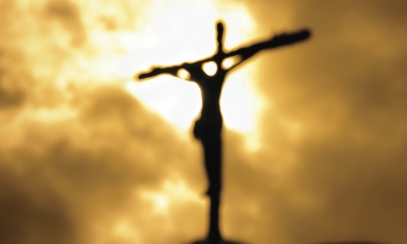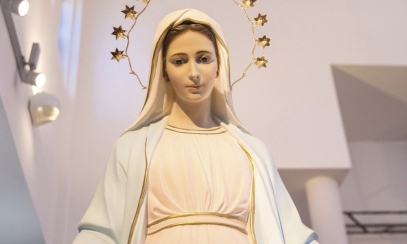
A pope, an angel and a stigmatist
God’s own 20th Century Eucharistic Revival
God’s own 20th Century Eucharistic Revival
The bishops of the United States are currently leading us through a multi-year Eucharistic Revival to increase our appreciation for the beauty of the Mass and reawaken faith in the Real Presence of Jesus in the Holy Eucharist. The Solemnity of the Body and Blood of Christ on June 11 will mark the beginning of the next phase of this Eucharistic Revival, with a focus on strengthening faith in the Eucharist in our parishes and Catholic schools.
It is beautiful to look back at the first decades of the 20th century, to see how God was leading his own “Eucharistic Revival” in some astounding ways.*
August 8, 1910: Pope St. Pius X issues the decree Quam singulari, allowing children who were at the “age of discretion” to receive both the sacrament of penance and Holy Communion. He wrote that these sacraments should be offered “when a child begins to reason, that is about the seventh year, more or less. A full and perfect knowledge of Christian doctrine is not necessary either for First Confession or for First Communion.” He lamented that in the past, “owing to various local customs and opinions, the age determined for the reception of First Communion varied widely”, even up to age 14 or older. This saintly pope believed that allowing younger children to receive the Eucharist would help protect them from spiritual dangers and be a source of spiritual power for the entire Church.
Fall 1916: In preparation for Mary’s 1917 apparitions to the three children at Fatima, the “Angel of Peace” appears three times to them in 1916. As World War I was devastating Europe, the angel taught them about prayer, sacrifice and the Holy Eucharist. One of the visionaries, Sister Lucia, later described the third angelic visit:
“An extraordinary light shone upon us. We sprang up to see what was happening, and beheld the Angel. He was holding a chalice in his left hand, with the Host suspended above it, from which some drops of blood fell into the chalice. Leaving the chalice suspended in the air, the Angel knelt down beside us and made us repeat three times:
Most Holy Trinity, Father, Son and Holy Spirit, I adore You profoundly, and I offer You the most precious Body, Blood, Soul and Divinity of Jesus Christ, present in all the tabernacles of the world, in reparation for the outrages, sacrileges and indifference with which He Himself is offended. And, through the infinite merits of His Most Sacred Heart, and the Immaculate Heart of Mary, I beg of You the conversion of poor sinners.
“Then, rising, he took the chalice and the Host in his hands. He gave the Sacred Host to me, and shared the Blood from the chalice between Jacinta and Francisco, saying as he did so: ‘Take and drink the Body and Blood of Jesus Christ, horribly outraged by ungrateful men! Make reparation for their crimes and console your God!’ Once again he prostrated himself on the ground and repeated with us, three times more, the same prayer ‘Most Holy Trinity…,’ and then disappeared” (Memoir II, 1937).
May 13, 1917: The Blessed Mother first appears to three shepherd children in Fatima, Portugal. She told them, “You will have much to suffer, but the grace of God will be your comfort.” According to Lucia, a great light encircled them and, without thinking about it, they all started reciting this prayer: “Most Holy Trinity, I adore Thee! My God, my God, I love Thee in the Most Blessed Sacrament.” Why would the Trinity be mentioned in this prayer centered on the Eucharist? Because Jesus, truly present in the form of bread and wine, is the second person of the undivided Holy Trinity; therefore, he can never be “separate” from the Father and the Holy Spirit.
Sept. 20, 1918: Padre Pio (now St. Pio of Pietrelcina) receives the stigmata. A little over a year before his death, Bishop Joseph Cistone brought the relics of Padre Pio to the Cathedral of Mary of the Assumption. The turnout was tremendous, which meant a lot to Bishop Cistone in part because of his family connection to this saint; his grandmother had actually gone to confession with Padre Pio in Italy. This extraordinary modern saint and stigmatist, who died in 1968, gave testimony about how he received the five wounds of Christ from the Lord during a mystical experience after Mass:
“I saw our Lord as if He were on the cross…lamenting the lack of response from mankind, especially from those consecrated to Him who are His favorites. He was showing that He was suffering and that He desired to unite souls to His Passion. He invited me to enter into His sufferings and to mediate upon them: and at the same time to concern myself with the health of the brothers. Immediately I felt full of compassion for the sufferings of the Lord and I asked Him what I could do. I heard this voice: ‘I unite you to my Passion.’ And immediately, the vision having disappeared, I came to and I saw these signs from which blood was flowing. I did not have them before.”
Having received the stigmata (Christ-like wounds in his hands, feet and side), it would sometimes happen that the wounds on his hands would be visible when he celebrated Mass. God used his miraculous wounds as signs pointing precisely to what the Church teaches…that at every Mass the once-and-for-all sacrifice of Christ on the cross is brought forward in time to us in a real but mystical way. The Christ-like wounds that St. Pio of Pietrelcina bore also anticipate one of the most important insights of Vatican II, emphasizing the importance of the connection between the Eucharist and Christ’s life-giving sacrifice on Calvary: “Taking part in the Eucharistic sacrifice, which is the source and summit of the whole Christian life, [the faithful] offer the Divine Victim to God, and offer themselves along with It” (Lumen Gentium, 11).
May this understanding of the Holy Sacrifice of the Mass enrich our experience of the Lord’s saving love at every celebration of the Eucharist and encourage us to make the Eucharist a priority in our journey as disciples of the Lord.
* Catholics are free – but not obliged – to accept apparitions which Church authority has officially approved. These are "private" revelations and do not belong to the deposit of faith which Christ handed on to the apostles (the once-and-for-all “public revelation” of the Lord which Catholics are obliged to accept). For further study, see Catechism of the Catholic Church no. 67.
Dr. Dan Osborn is the Diocesan Theologian and Coordinator of Permanent Diaconate Formation & Ministry for the Diocese of Saginaw.



